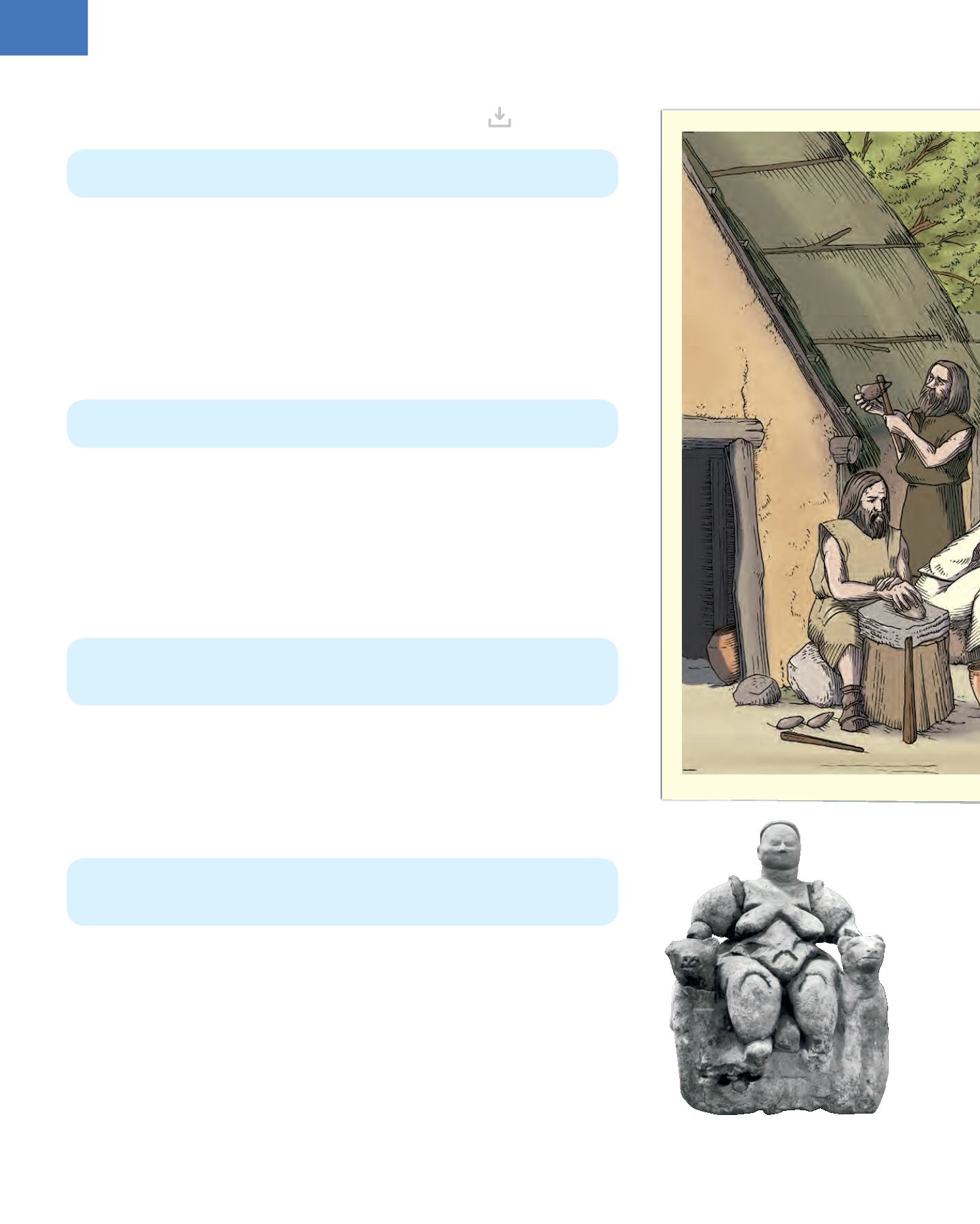
2
30
2. The Neolithic period and the Bronze and Iron Ages
2. THE FIRST SEDENTARY SOCIETIES
Some of the oldest settlements are
Jericho
(Palestine) and
Catalhoyuk
(on the
Anatolian Peninsula, in present-day Turkey).
The houses were made of
mud
,
wood
,
reeds
and
straw
. The crop fields and animal
pens were situated around the village. These villages were built on river banks so they
had access to water for drinking and watering the crops. The
land nearest the rivers
is also the most
fertile
and therefore produces more abundant harvests.
2.1. The social structure and new activities
❚
Wicker baskets were made (
basket making
) to store grain and food. They also
began to make ceramic pots by shaping wet clay into objects (
pottery making
).
❚
Spindles
and
looms
were invented to make clothes. First long threads were spun
from flax or wool, on a spindle. Then these threads were woven together on a
loom to make cloth.
While the men went hunting, the women looked after the
crops
and
livestock
.
Therefore, they played an important role in the development of these activities.
Initially, decisions that affected the community were probably made in meetings with
all the village inhabitants. The most valued opinions were those of the elders (who
were respected for their experience) and, in periods of conflict, the military leaders,
known as
chieftains
.
2.2. Neolithic art and culture
One of the first divinities was the mother goddess, who was worshipped to increase
the fertility of the population and the land for better harvests.
Burials
also became more common. The dead were buried under houses or in the
necropolises (cemeteries) outside the settlements. Families remembered the dead and
eventually began to venerate them. This is called
ancestor worship
.
A new form of artistic expression emerged with the decoration of ceramic objects.
This was done with paints or by making small imprints on the object.
Figurine of the mother goddess found in
the village of Catalhoyuk
Neolithic groups abandoned their
nomadic
way of life and became
sedentary
.
This means they settled permanently in
villages
and
small settlements
.
Agricultural production and the domestication of animals created
new needs
.
Craftsmanship
developed to meet these needs.
The remains discovered in houses and burial sites show that the
social equality
of the previous era was maintained. None of the groups held power over the
others.
The new Neolithic discoveries of agriculture and livestock farming influenced
religion. The Sun, water and stars were
deified
(worshipped as Gods) to control
the
forces of nature
.


